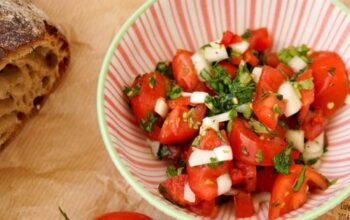There are few kitchen staples as comforting, versatile, and essential as a good Classic Chicken Broth. For centuries, cooks around the world have simmered chicken bones and vegetables to create this golden liquid that serves as the backbone of countless dishes. From soups and risottos to sauces and stews, a well-made chicken broth brings depth, warmth, and nourishing qualities to every recipe it touches. Making your own broth at home is not only economical but also ensures a cleaner, richer flavor compared to most store-bought versions.
This recipe outlines a traditional method for preparing a clear, flavorful chicken broth that you can use immediately or freeze for future cooking. It requires a few simple ingredients, some patience, and gentle simmering to allow the flavors to meld together.
Ingredients
- 1 whole chicken (about 3–4 pounds), or 2–3 pounds of chicken parts such as backs, wings, and necks
- 12 cups cold water
- 2 medium onions, quartered (leave the skins on for extra color)
- 3 medium carrots, roughly chopped
- 3 celery stalks, roughly chopped
- 1 whole garlic bulb, halved horizontally
- 1 bay leaf
- 6–8 whole black peppercorns
- A handful of fresh parsley stems
- A few sprigs of fresh thyme (or 1 teaspoon dried thyme)
- Salt to taste (optional; many prefer to season later depending on use)
Instructions
- Prepare the chicken
If you are using a whole chicken, remove any giblets from the cavity and rinse the bird under cold water. Pat dry with paper towels. You may choose to cut the chicken into several large pieces, which allows the flavor to release more easily. - Combine with water
Place the chicken or chicken parts in a large stockpot. Pour in 12 cups of cold water, ensuring that the meat is fully covered. Using cold water is essential, as it helps extract collagen from the bones and proteins from the meat gradually, resulting in a broth that has body and richness. - Bring to a simmer
Slowly bring the pot to a gentle simmer over medium heat. As the broth heats up, you will notice a foam or scum forming on the surface. Skim this off with a ladle or spoon to keep the broth clear. Avoid letting the liquid boil vigorously, as this can make the broth cloudy and greasy. - Add vegetables and aromatics
Once the surface has been skimmed, add the onions, carrots, celery, garlic, bay leaf, peppercorns, parsley stems, and thyme. Stir gently to combine. - Simmer gently
Reduce the heat to low and let the broth simmer very gently, uncovered, for 3 to 4 hours. The liquid should barely bubble. During this time, flavors will deepen and the broth will take on a golden hue. Check occasionally, skimming away any excess fat or foam that rises to the surface. - Strain the broth
After simmering, carefully remove the chicken with tongs. If you wish, the meat can be shredded and used in soups, salads, or sandwiches. Set a large fine-mesh sieve or cheesecloth-lined colander over a heatproof bowl or another pot, and pour the broth through it. Discard the solids (vegetables and aromatics). - Cool and store
Allow the strained broth to cool at room temperature, then refrigerate. Once chilled, you may notice a layer of fat solidifying on top. This can be easily removed and discarded, or kept for cooking. Store broth in airtight containers in the refrigerator for up to 5 days, or freeze in portions for up to 3 months.
Tips for the Best Chicken Broth
- Balance: Avoid overpowering the broth with too many herbs. Keep the aromatics simple for a clean, versatile flavor.
- Clarity: Always skim foam early in the cooking process and simmer gently to maintain a clear broth.
- Enhancements: For extra depth, roast the chicken parts and vegetables in the oven until browned before simmering. This creates a darker, richer stock.
- Convenience: Freeze broth in ice cube trays for quick use in sauces or sautés.
Uses for Chicken Broth
Classic Chicken Broth can be enjoyed on its own as a warm, nourishing drink or used as a base for soups like chicken noodle, minestrone, or creamy potato. It’s also ideal for cooking grains such as rice, barley, or quinoa, where it infuses flavor directly into the dish. Additionally, it enhances sauces, gravies, and stews, making it one of the most versatile tools in your kitchen.



